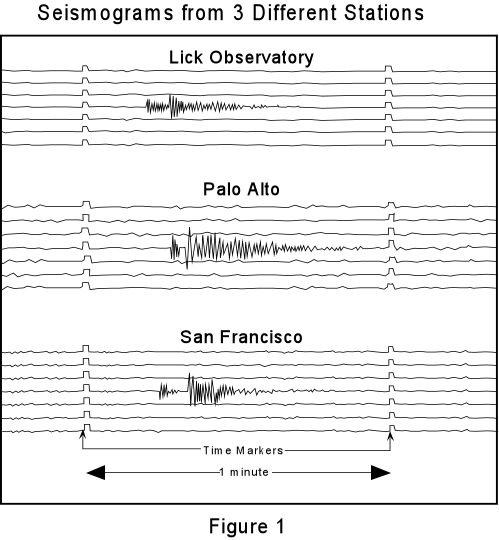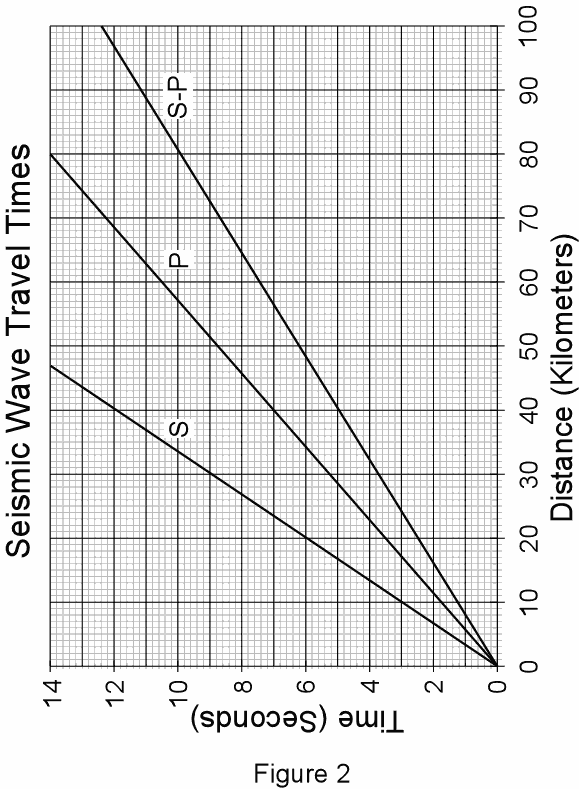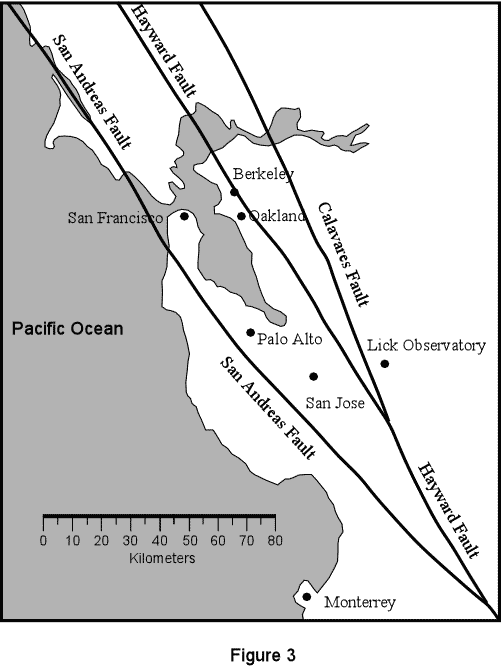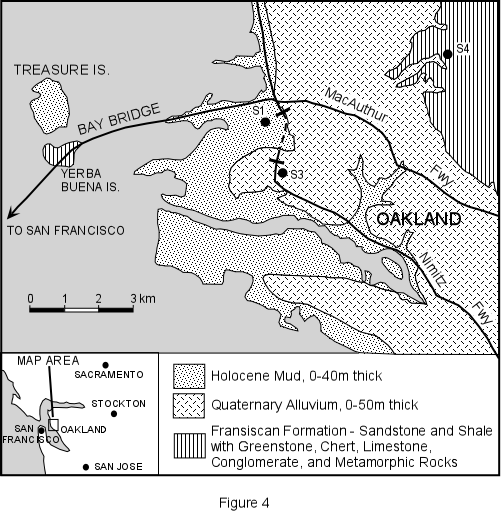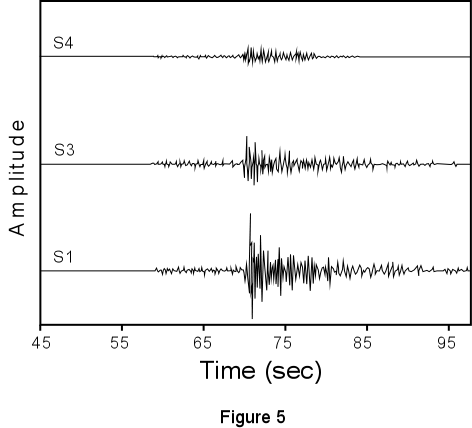- 50 Nelson Av (Single Family Wood Frame 2 story house built after
1939)*
- 75 Avon Av (Single Family Wood Frame 2 story house built before
1940)
- 170 Walnut Av (Unreinforced Masonry 2 story house)
*Note that this exercise is hypothetical. The
actual existence of houses at these addresses is not known with
certainty, nor are the construction characteristics at any of these
houses known. Any resemblance to actual houses or addresses is
purely coincidental and is unintended.
You should use the links to the interactive liquefaction maps and
shaking maps to first determine the susceptibility of each of these homes
to liquefaction and shaking during a worst case scenario earthquake -
specifically, an earthquake where the entire northern portion of San
Andreas fault moves and generates a Magnitude 7.9 earthquake like it did
in 1906. Proceed as follows:
First, click on the link to the Liquefaction Maps/Info. On the page
that opens, click on the link to "Interactive (GIS) SUSCEPTIBILITY Map
- "Zoom in" capability!". This will open
the ABAG GIS (Geographic Information System) page. Read the Notice
on the page and adjust your display as necessary, then click on the
circular image in the center to go to the Liquefaction GIS site. A
map showing Liquefaction Susceptibility for the entire San Francisco Bay
Area will load. Notice that the various buttons occur on both the
left and right-hand side of the map. Of particular importance are
the buttons to Zoom in/out and the button for Help. Notice
that the map is at a scale much too large to be useful. You will
need to zoom in to the area you are interested in to get useful
information. Since you know the addresses of the properties are
you interested in, you can click on the down arrow next to "Map a
Location". in the lower
right, then select "Search by Address", then click on the "Find Address"
button. In the upper box enter the street address of the first property
you are interested in (i.e. 50 Nelson Av), then in the Zone box, enter the
zip code (i.e. 94941) (don't ask why the box is labeled "Zone" rather than
Zip Code - it is one of the mysteries only known to the programmers of
this site). Finally, click on the "Locate" button. A zoomed in
map will load showing the location
of the address you entered. You can then use the Legend on the right
to determine the Liquefaction Susceptibility for the property.
Repeat the procedure for each of the other two properties.
Since you can't produce a map that shows all three addresses at the
same time, remember where each address is located so that you can print
one map and put the locations of the three properties on one map by hand,
otherwise you will have to remember the locations of the three different
properties for the next part of the exercise.
Next, go back to the main ABAG Earthquake Maps page -
http://www.abag.ca.gov/bayarea/eqmaps/ and click on the link to
Shaking Maps/Info. Then click on the link to NEW Interactive (GIS)
Maps for Future Earthquake Scenarios. Wait for the page to
completely load, then check to make sure the box next to "Entire San
Andreas (1906 Quake)" is checked. As you did above, you
want to locate each property, so click on the down arrow next to Map
Location and bring up a map showing the location of each property.
Once the map loads, it will probably not be showing the Legend on the
right hand side of the screen. If not, click on the button on the
left hand side of the screen to "View Legend". Note the
Modified Mercalli Intensity Shaking Severity
Level for each property. Note that you do not have to
turn in any printed copies maps for this part of the homework exercise.
Answer the following question -
- For each property, what is the Liquefaction Susceptibility and the
Shaking Severity Level, including Modified Mercalli Intensity Scale
value for an earthquake similar to the 1906 earthquake? (3 points)
- From your acquired knowledge of the relationships between shaking
intensity, liquefaction, and the type of geologic material underlying an area,
make an educated guess about the topography and materials that underlie
each of the three properties (3 points).
Before you use the answers to the above questions to decide which
property you will accept from Denyallclaims, you should consider the type
of construction involved in each of the houses.
To determine the effects of construction type during
the shaking of the worst case scenario earthquake, from the main ABAG page
click on the link to Shaking Maps/Info. Then click on How and
Why Does ABAG Make These Maps? and then on What Does Ground Shaking
Intensity REALLY Mean? Page
down, looking at the pictures of various types of construction damaged in
other earthquakes as you go, then look at Table 1. From the
information you obtained above on Modified Mercalli Intensity Scale shaking and
knowledge of the construction type for each address, answer the following question:
- Which property would you accept from Denyallclaims based on all of the
information available and your desire to have the safest and least
susceptible house available, keeping in mind that Table I does not say
anything about possible damage that may result from liquefaction?
Discuss the reasoning used to obtain your answer. (3
points)
